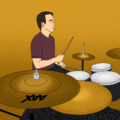The guaracha, a vibrant and rhythmic genre of music, has its roots deeply embedded in the cultural soil of Cuba. Originating in the 18th century, guaracha began as a genre of Spanish theatre, with lively and satirical music.
Guaracha history
Guaracha underwent a significant transformation in Cuba, where it evolved into a unique blend of Spanish melodies and African rhythms, embodying the cultural fusion of the island. With its fusion of diverse influences, distinctive sound, and uplifting vibe, the genre continues to resonate with audiences around the world, transcending cultural and geographical boundaries.
Influences of guaracha
The cultural influences of guaracha are as diverse as its rhythms – a product of the melting pot of Cuban society, where European, African, and indigenous cultures converge. The African influence is particularly notable in its rhythms and percussion, echoing the beats of African drums. Spanish elements are evident in its melodies and harmony, showcasing a fusion that is quintessentially Cuban.
A distinctive sound
The sound of guaracha is characterized by its fast tempo and lively rhythm. The genre-defining instruments include the tres (a Cuban guitar), bongos, trumpets, and the clave, a wooden percussion instrument that provides the foundational rhythm. The use of call-and-response patterns in the vocals is another hallmark, adding a layer of interaction and energy. Modern Guarachas often incorporate electronic instruments and effects, expanding the genre’s soundscape while maintaining its traditional essence.
Emotional Impact
The emotional impact of guaracha is one of joy and vivacity. It is music that invites movement and celebration, embodying a spirit of resilience and happiness. The lively beats and fast tempo evoke a sense of freedom and euphoria, making it a staple in festive occasions. Guaracha is not just a music genre; it is an expression of the joyous spirit of its people, a testament to their ability to find happiness and celebration in the rhythm of life.
Classic and modern guaracha examples
“Compay póngase duro” – Cuarteto Marcano (1956)
This song is a classic example of guaracha music from the 1950s. The song, recorded in New York and released under the Decca label, is performed by musicians Piquito and Claudio. It showcases the energetic and rhythmic nature of guaracha, combining lively beats with catchy lyrics.
“Hermoso Bouquet” (1967)
This song is a popular choice in Puerto Rican parrandas (a Puerto Rican Christmas carolling tradition). Unlike other songs that reference food or drink, “Hermoso Bouquet” describes a parranda where visitors bring the homeowners a gift and a bouquet of flowers. The authorship is uncertain, but it is thought to have been composed by Manuel “Canario” Jiménez around 1967 or Claudio Ferrer Cotto, a famous Puerto Rican composer.
“Chapeando” – Los Van Van (2005)
“Chapeando” by Los Van Van is a song that exemplifies the rich tradition of Cuban music. Released in 2005, the song starts with natural sounds like running water and birds, followed by the unmistakable laughter of Robertón, the lead singer. Its lyrics and coros (choruses) are infused with Afro-Cuban religious references, reflecting the vision of Juan Formell, the band’s leader. Robertón’s deep voice perfectly complements the song’s rhythm and vibe, making it a distinguished track in the genre.
“Qué Chimba” – Maluma (2020)
“Qué Chimba” by Maluma blends traditional Colombian guaracha rhythms with modern electronic beats. Released in 2020, the track showcases Maluma’s signature reggaeton style fused with the infectious energy of guaracha, creating a dance-floor anthem that resonates with both Latin American audiences and global listeners. Its upbeat tempo, catchy hooks, and vibrant instrumentation mark it as a standout within the evolving landscape of Latin pop.
Be sure to check out other articles in our series, such as Evolution of Latin Hip Hop and Evolution of J-Pop : How Japanese Pop Music Conquered the World.
Written by Tyrus “Sir Louie“ Facey
Illustration by Holly Li





















